
Explore Puerto Rico
Natural Wonders
Beyond its 272 miles of beaches, Puerto Rico enjoys a wealth of natural and scientific attractions.
PPuerto Rico is home to nature reserves, many of which fall under the auspices of The Conservation Trust of Puerto Rico, "The Trust", established by the Puerto Rico and United States governments in 1970, protects and manages 20 natural and historic areas in the Commonwealth.
Whether you want to spend some time in nature to relax and clear your mind or get your adrenaline pumping, there are outdoor experiences in Puerto Rico suited for all types of travelers. Here are a few of the places you need to add to your bucket list.
Top Natural Wonders of Puerto Rico
Puerto Rico is a Nature Lover's Dream, with 36 nature reserves, 19 state forests, approximately 300 beaches, and the only tropical rain-forest in the National Forest System. Whether you want to spend some time in nature to relax and clear your mind or get your adrenaline pumping, there are outdoor experiences in Puerto Rico suited for all types of travelers.
Here are a few of the places you need to add to your bucket list, and some of the tour companies that can help you simplify the planning.
El Yunque Rainforest
El Yunque Rain Forest is the only tropical rain forest in the US National Forest system. Ample rainfall (over 200 inches a year in some areas) creates a jungle-like setting – with lush foliage, waterfalls and rivers. Hike along the trails that cover miles of breathtaking terrain. The rain forest is located in the NE corner of Puerto Rico, with the main entrance in Rio Grande, just off Rt 3, on Rt 191.
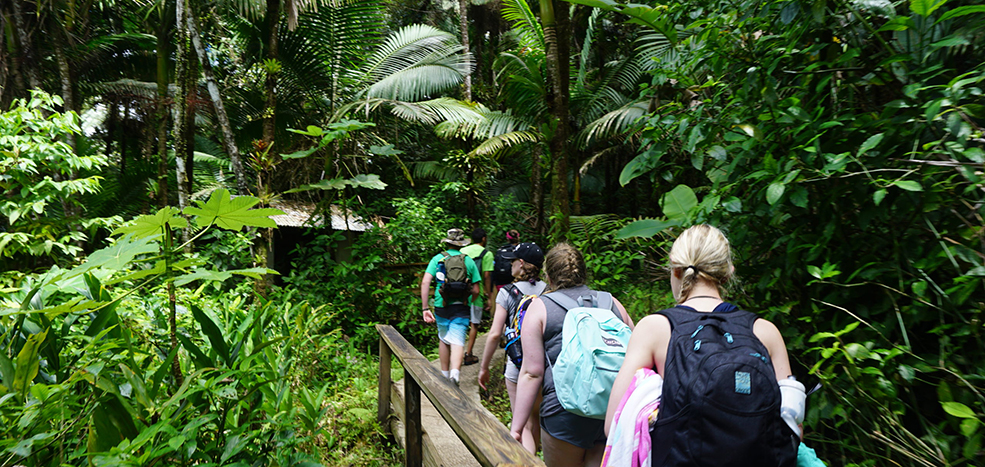
El Yunque
There are more than two dozen miles of trails, popular well-maintained paths to peaks and pools, and primitive paths into remote areas. The Forest contains hundreds of species of trees, orchids, plants and a few animals. You will hear the Coqui frogs and see large snails as they enjoy the moisture of the forest. You will also hear many birds as you walk the trails. El Yunque Peak provides a spectacular view of the forest and the eastern shoreline of the island.
Depending on the tour, you’ll learn about the history and biology of the area, including the more than 240 species of plants, such as tree orchids, giant ferns and wildflowers, and animals that thrive in the habitat, especially the native coquí frog. Tours usually include several stops at picture-perfect spots as well as a chance to try authentic Puerto Rican cuisine.
Karst Region Forests
The Karst Region is an area of limestone terrain, characterized by sinkholes, ravines, and underground streams, which covers more than 1/3 of the island's territory. The Karst area harbors the richest biodiversity in Puerto Rico. Biodiversity meaning: (boosts ecosystem productivity where each species, no matter how small, all have an important role to play).
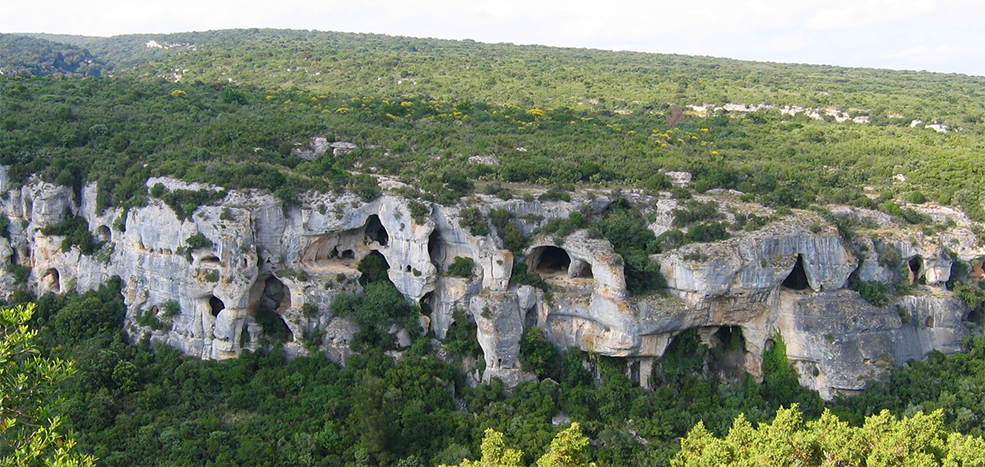
Karst Region Forests
The northern limestone contains Puerto Rico’s most extensive freshwater aquifer, largest continuous expanse of mature forest, and largest coastal wetland, estuary, and underground cave systems. The karst belt is extremely diverse, and its multiple landforms, concentrated in such a small area, make it unique in the world. Puerto Rico’s karst forests whether dry, moist, or wet share common physiognomic and structural characteristics. Karst forests contain the largest reported number of tree species per unit area in Puerto Rico. Both fauna and flora are rich in taxa; and many rare, threatened, endangered, and migratory species find refuge in the karst belt. Almost all fossil records of Puerto Rico’s extinct flora and fauna come from the karst belt.
Coastal Forests
Puerto Rico's coastal forests consist primarily of mangroves, as they shelter all kinds of marine and land organisms and help to prevent the shoreline from erosion.

Piñones State Forest
Piñones Forest, east of San Juan, has a boardwalk through the mangroves and Jobos Bay Esturine Reserve on the south coast is an off-the-beaten-path jewel.
Toro Negro Forest
Located in the south/center part of the island, the forest extends through several municipalities. Some the major points of interest is the Doña Juana waterfall, camping facilities, and hiking trails lined with many species of trees, orchids, and different species of birds, and leading to rivers and charcos (which are natural swimming pools).

Toro Negro Forest
As you cruise the winding PR-563 through the Ala de la Piedra borough, you'll find on the side of the road the main entrance to Bosque Toro Negro, a vast forest with around 18 km of trails where you can hike, take a plunge into its cold, pristine ponds and set up your camping tent for a relaxing weekend in the woods. There's also an observation tower atop the Cerro Doña Juan, which is Orocovis' highest point, and which you can climb to experience one of the best views Puerto Rico has to offer. Moreover, the camping site in Barrio Ala de la Piedra is a great place to stay in Orocovis during the weekend.
Cabo Rojo National Wildlife Refuge
Established in 1974, the Cabo Rojo National Wildlife Refuge lies along the southwest coast of Puerto Rico. It is one of the nine refuges managed by the Caribbean Islands National Wildlife Refuge Complex.

Cabo Rojo National Wildlife Refuge
In 1999 an additional 1,249 acres from the Cabo Rojo Salt Flats were added to the refuge; bringing the total acreage to 1,836. The salt flats are managed under a special use permit with a private operator, who continues to manage water levels as part of a commercial salt-harvesting operation. Water levels on the salt flats are also managed with the needs of shorebirds in mind. This area is considered the most important stopover for migratory birds and shorebirds in the Eastern Caribbean. The migratory birds use the refuge during the cooler months, while resident species are present year-round
The refuge is also a center for scientists to conduct research. The information they gather helps managers make decisions on how to protect and preserve native wildlife. To date, 245 plant species and 145 bird species have been identified on Cabo Rojo National Wildlife Refuge.
Cayo Santiago
This is known as the island of monkeys in Puerto Rico. This is where most of the monkeys you can see are. The water around the island is shallow, so one of the better viewing experiences is to kayak around the island. Unfortunately, recent hurricanes have taken their toll on the island so the ability to actually get there for viewing might be impacted depending on when you go.
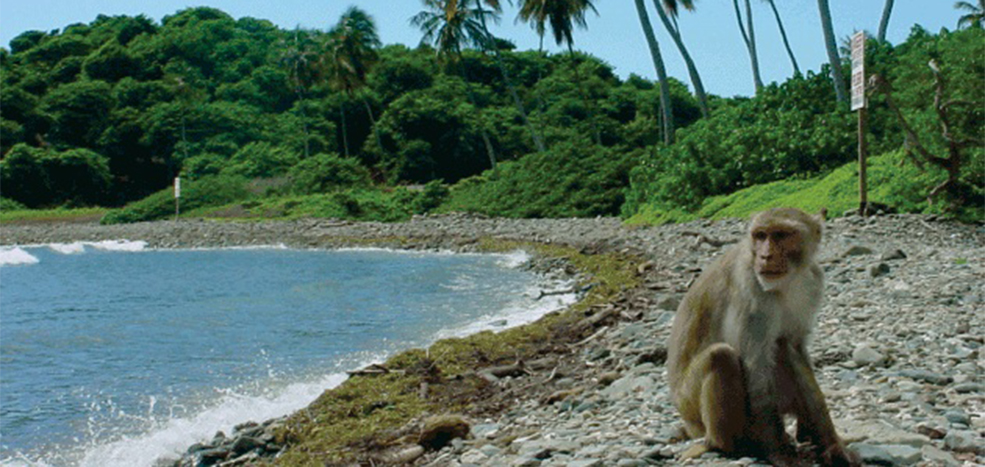
Cayo Santiago
As this is an island, you cannot get there by car. However, you can take an easy half hour-long kayak trip over to the island. You will be able to see some of the monkeys from your kayak.
Guanica State Forest
Guánica is home to the best-preserved dry forest in the Caribbean. Whereas El Yunque receives 200 inches of rain every year, the 1,000-acre Guánica State Forest — a United Nations World Biosphere Reserve — receives only about 30 inches annually.
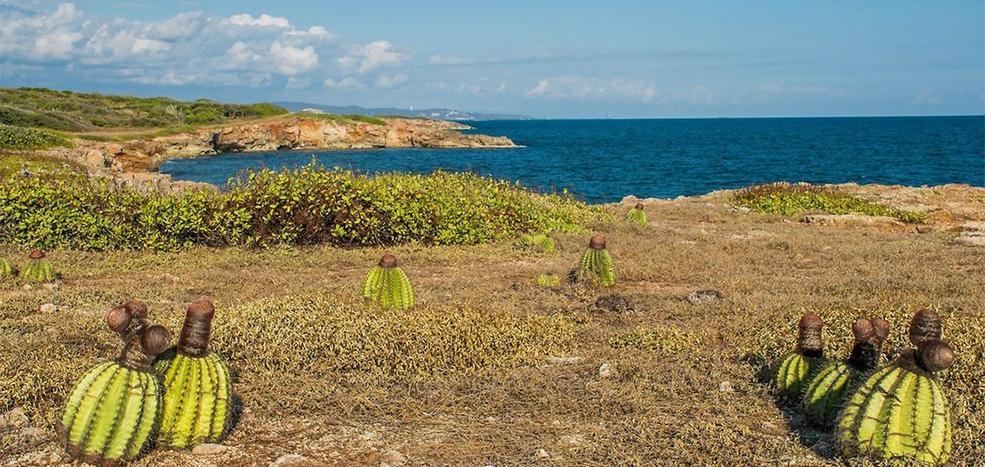
Guánica State Forest Puerto rico
Popular among families, couples, and solo explorers, the reserve is a habitat for more than 700 species of plants, of which about 50 are endangered and about 15 are endemic. The forest also features 12 hiking trails with varying levels of distance and difficulty. Follow these trails to stunning secluded beaches such as Ballena Bay (take Ballena Trail) and Tamarindo Beach (take the Lluberas Trail), where you can enjoy a day at the beach in a tropical paradise.
Meanwhile, the Fuerte Trail — about six miles roundtrip — leads to Fort Caprón, which was once an observation point during the Spanish colonization. En route to the fort, you will find spectacular views of Guánica Bay, as well as other shorter trails, in case you want to explore a little more.
The entrance to the forest is free of charge and it is open daily from 8:00 a.m. until 5:00 p.m. It’s best to arrive early in the morning in order to make the most of all the sightseeing opportunities. Make sure to bring sunscreen, mosquito repellent, snacks, and plenty of water, and wear light clothes and comfortable shoes suitable for walking on rocky trails.
Río Camuy Cave Park
You can find the world’s third-largest underground river at one of the more complex cave systems on the planet at the Río Camuy Cave Park. Explore its ecosystems — where there are over 16 bat species, the natural forms of stalagmites and stalactites, and even sinkholes.
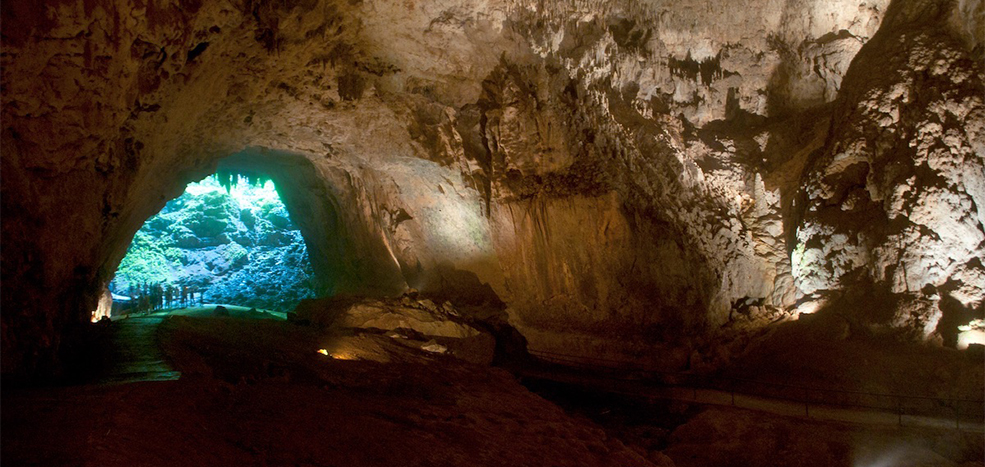
Río Camuy Cave Park
The Camuy River Cave Park (Spanish: Parque de las Cavernas del Río Camuy) is a cave system in Puerto Rico. It is located between the municipalities of Camuy, Hatillo and Lares in northwestern Puerto Rico, but the main entrance to the park is located in Quebrada, Camuy. The caverns are part of a large network of natural limestone caves and underground waterways carved out by the third-largest underground river in the world, the Río Camuy (Camuy River). Over 10 miles of caverns, 220 caves and 17 entrances to the Camuy cave system have been mapped so far. This, however, is only a fraction of the entire system which many experts believe still holds another 800 caves. Only a small part of the complex is open to the public.
The 268-acre park built around the cave system features tours of some of the caves and sinkholes, and is one of the most popular natural attractions in Puerto Rico. Tours are offered on a first-come basis, and a fee is charged. Call to confirm hours and availability. The park has a wooded area with picnic pavilions, a play area for the kids, walking trails, a little restaurant, and a souvenir shop. The audio guide players are available in both English or Spanish languages.
Cueva Ventana
Easy 15 minute walk to the cave. Incredible view. Learn cultural and ecological history. Travel through an exciting cave to reach the window view. Wildlife is very common.

Cueva Ventana
Take a short and easy guided hike up to and through the cave to this amazing view of the surrounding landscape and the Rio Grande de Puerto Rico, the river that runs below the cave. It is a 15 minute walk to reach the cave, then you will have another 30 minutes to explore the interior. The guide will teach you about the history and ecology of Puerto Rico, and a lot about the area.
After reaching this view you can take the same path back, or you can travel down through to another cave. The time it takes to return is about the same, but you get the experience of going in through one part of the cave and coming out the other. The cave has lots of fruit bats, and the guides are careful not to bother or disturb them while you are moving through. They will provide lamps, as well.
Arecibo is located about 2 hours west of San Juan and is well worth the trip, with its beautiful caves and a number of scenic beaches.
Culebra National Wildlife Refuge
This is a stunning nature refuge that covers over 1,580 acres encompassing a large part of the Culebra and its 23 adjacent islets and cays. Migratory seabirds are visible in late spring and summer. The sea turtles nest on numerous refuge beaches were you snorkel.
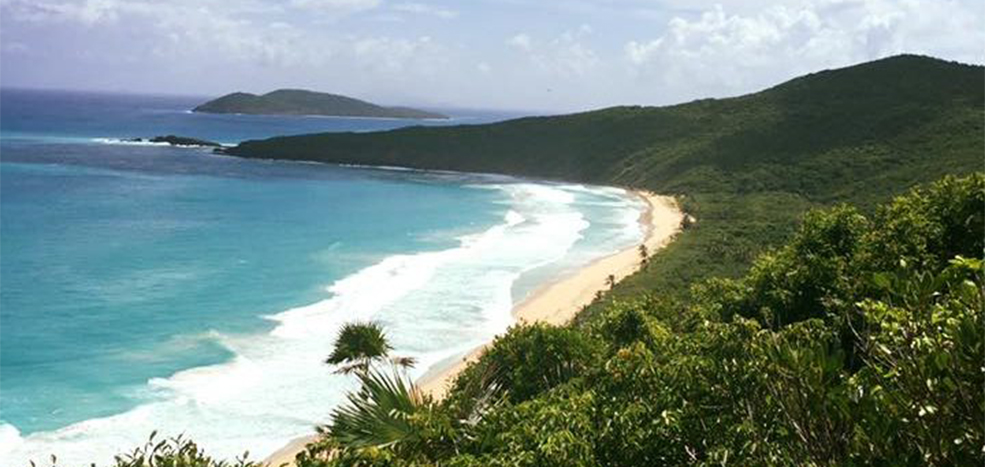
Culebra National Wildlife Refuge
Visitors are only permitted at Cayo Luis Peña and Culebrita. Spectacular diving and snorkeling, it is also a paradise for bird-watchers, nature lovers, and photographers. Accessible by water taxi and private boat.
Mona and Monito Islands Nature Reserve
Reserva Natural Islas (Islands) Mona y Monito consists of two islands, Mona and Monito, in the Mona Passage off western Puerto Rico in the Caribbean. Mona and Monito Islands Nature Reserve encompasses both land and marine area, and with an area of 38,893 acres it is the largest protected natural area in the Commonwealth of Puerto Rico (El Yunque National Forest, with 28,434 acres, is the largest in the main island of Puerto Rico). The Mona and Monito Islands reserve represents a living laboratory for archaeological, biological, geological, oceanographical and wildlife management research.
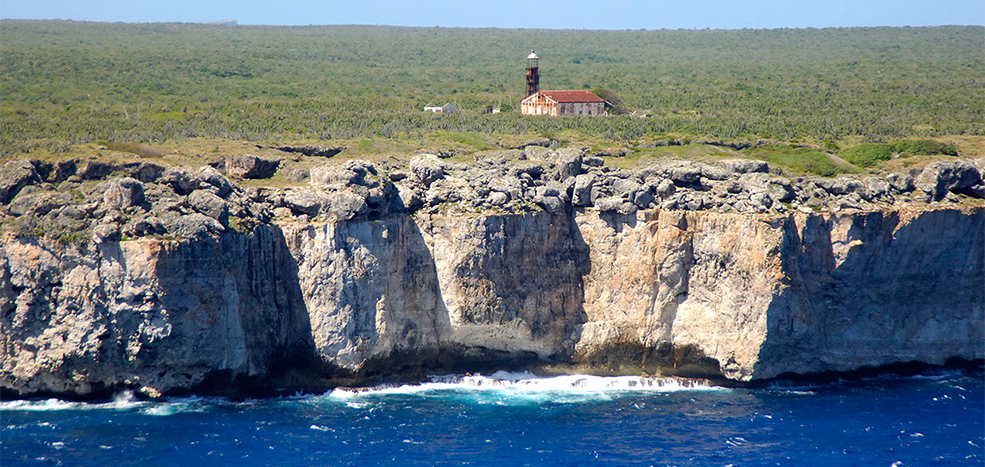
Mona and Monito Islands Nature Reserve
If the Galapagos is on your bucket-list, then a stop to Mona Island will delight you. The island teems with giant iguanas. 3 species of endangered sea turtles along with red-footed boobies, and countless other sea birds.
The waters surrounding the island are home to over 270 species of fish, some species so rare or endangered that the island is considered their last significant refuge. Visiting Mona Island requires a special DRNA permit, there are several say tours that are offered.
Toro Verde Nature Park
The Toro Verde Nature Park is an ecological adventure park where the family and friends can spend their day enjoying some of the most breathtaking views of Puerto Rico. This park has more miles of zip-line cables than any other park in the World, as well as rappelling and rope bridges over the lush canopies in the central mountain range.
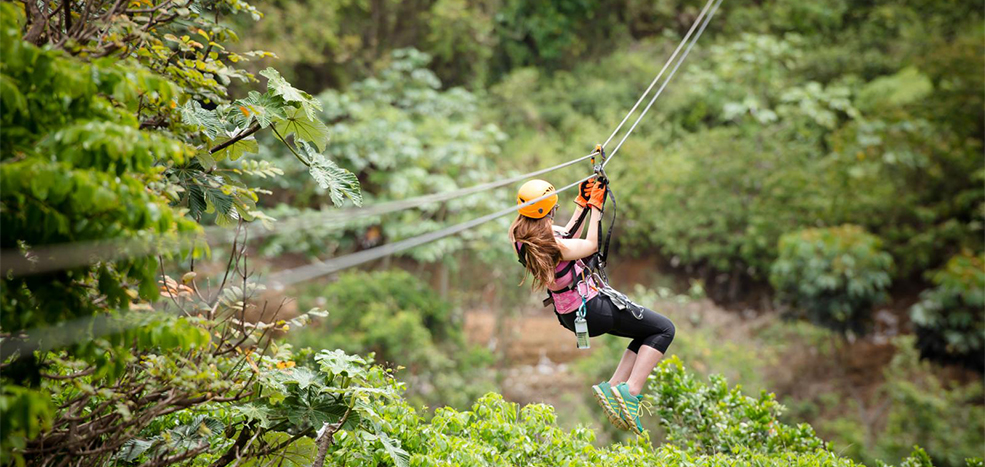
Toro Verde Nature Park
Toro Verde is the new ecotourist park where you'll spend hours of never-ending adventures. Enjoy the most beautiful landscapes that will leave you breathless; in addition try some extreme sports and interact with the nature that surrounds you. If you are one of those who love to feel that adrenaline rush, this is the place for you.
Here you can hang from a cable thousands of feet up in the air, climb a mountain, ride world mountain bike class trail at Marla Streb's Singletrack Jungle!
There's fun for everyone, kids, teens and adults. Find a new world in the middle of Puerto Rico.
You May Also Like
-

06 Jul 2022
Puerto Rico Videos -

07 May 2022
Best Family Friendly Activities -

30 Apr 2022
Best Hiking Trails in Puerto Rico -

29 Apr 2022
Food Trails and Culinary Adventures -

29 Apr 2022
Puerto Rican Cocktails & Drinks -

28 Apr 2022
Landmarks and Iconic Places -

27 Apr 2022
Puerto Rican Traditional Dishes -

26 Apr 2022
Events and Festivals in Puerto Rico -

25 Apr 2022
The Musical Sounds of the Island -

25 Apr 2022
Art Museums in Puerto Rico -

24 Apr 2022
Puerto Rico Natural Wonders -

17 Apr 2022
Best Beaches in Puerto Rico -

17 Apr 2022
The Best Spots for Watersports -

10 Feb 2022
Puerto Rico – Island of Enchantment -

01 May 2018
Where to Surf in Puerto Rico

